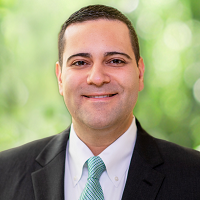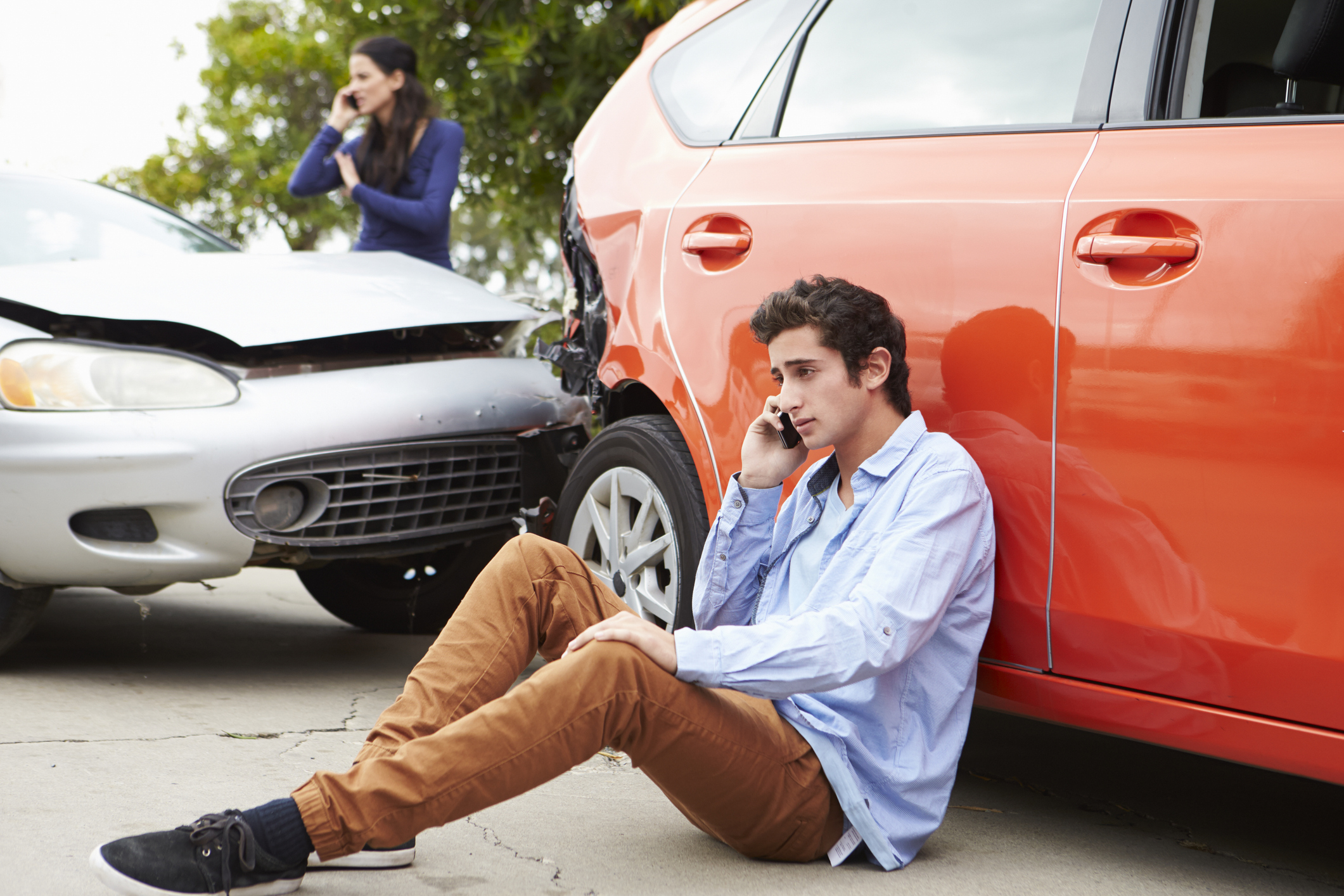Investing for Charitable Giving: Discipline Reaps Rewards
Consider doing nothing when markets get volatile, rather than shifting your charitable investing strategy in the moment.


There are plenty of fears that rob investors of sleep — perhaps none more so than market volatility. Whether investing for retirement or another long-term goal, few investors look forward to unpredictable swings in the market — and the same is true when investing for charitable giving goals. The reality is periods of market volatility are part of the investing landscape. And they’re rarely the right time to make drastic adjustments to your portfolio or your investment approach.
With the right partners and the right strategy in place, the best approach during periods of market volatility is to stay disciplined and take a long-term view. It’s an important virtue worth further exploring to help investors confidently navigate market volatility and offer a bit of peace of mind. Here are a few key takeaways for investors to consider when faced with market volatility and the impact it can have on charitable investments.
The right approach for when market volatility looms
When markets are fluctuating and the news is reporting selloffs and course corrections, staying disciplined with your charitable investment strategy is easier said than done. Doing nothing is often the hardest thing to do. Yet the research is clear: Attempts to time the market are futile. The best and worst trading days often happen in close proximity. Attempting to dodge losses often means missing opportunities for gains.
From just $107.88 $24.99 for Kiplinger Personal Finance
Become a smarter, better informed investor. Subscribe from just $107.88 $24.99, plus get up to 4 Special Issues

Sign up for Kiplinger’s Free Newsletters
Profit and prosper with the best of expert advice on investing, taxes, retirement, personal finance and more - straight to your e-mail.
Profit and prosper with the best of expert advice - straight to your e-mail.
Let’s take the COVID-19 pandemic and related market downturn as an example. Based on Vanguard calculations using data from Morningstar, Inc.1, if an investor had exited the market in March 2020 through the recovery in July 2020, they would have seen a negative 2% return. On the other hand, those who maintained a conventional portfolio balance of 60% stocks and 40% bonds would have seen a 21% return over that period of market volatility. Even amid a historic pandemic, drastic action was the wrong approach.
When it comes to disciplined investing, the right long-term charitable investment plan — coupled with the right charitable investment partner — is paramount. Without a sound investment strategy, it will be difficult to achieve your investment goals during any market conditions, but particularly during periods of volatility. The best investment plans are built to withstand market volatility in accordance with an investor’s goals and risk tolerance and, in the case of charitable investment plans, a donor’s charitable timeframe. That indicates that the time for donors to think about how they’ll handle market volatility is when they are building their portfolio and investment strategy, not during times of major market swings. The right partner will help investors navigate this.
Different investment approaches will yield different perspectives on market volatility and discipline. Vanguard Charitable, for instance, adheres to Vanguard’s time-tested investment principles, emphasizing diversification, low costs and a long-term outlook. Finding a partner that can deliver options based on sound principles, aligned with individual investor preferences, is vital to successfully navigating market volatility in the long term. Investors cannot control market movements, but they can keep more of their returns by reducing investment costs and taxes.
Planning for the unexpected
Too often, just the suggestion of looming market volatility tempts investors to take sweeping actions related to their portfolios. Geopolitical events, interest rate changes, shifting regulations, natural disasters and other headline-grabbing events all have the potential to impact markets and short-term performance. It’s not always easy, but these are the times when investors need to stay disciplined and rely on their strategy and long-term perspective. It’s the most important time to trust that the difficult decisions have already been made and the right plan is in place.
With charitable investing, there are several actions that can help donors remain disciplined. Here are four steps:
- Make regular contributions to sustain growth and granting
- Stay invested through volatile times, unless a reallocation was a part of original plans
- Rebalance to manage risks and maintain a suitable asset allocation
- Have a plan for charitable giving
Market upswings, on the other hand, could mean opportunities to enhance charitable giving while achieving the tax benefits that come by giving with a donor-advised fund (DAF), a giving vehicle that supports immediate needs and long-term causes through grants to qualified 501(c)(3) charities. These market tailwinds could prompt investors to increase expected or unexpected giving and further their philanthropic impact.
Staying the course results in greater charitable impact
Many investors saving for retirement fear volatility or a dip in the market, especially as they near their final days of gainful employment and a steady paycheck. For those investing for charitable purposes, this timing concern is less pronounced, but no less important to consider and manage properly. When investing and giving with a DAF, the money in the account is already earmarked for philanthropic purposes and will continue to grow tax-free. This gives donors greater flexibility to execute their giving strategy.
DAFs empower urgent giving as well. When natural disasters or other unexpected giving needs occur, donors should remain disciplined and rely on their investment strategy to navigate need and the potential impact of giving. In some cases, the same causes or events creating unpredictable markets will come with a call for charitable giving that donors can support.
The concept of disciplined investing, while not a new one, is a proven approach for investors of all kinds. Keeping a long-term view and accepting the ebbs and flows of the market historically result in greater gains over time. Even better, the right charitable investment vehicle, strategy and partner can shield investors from the stress of market volatility and provide peace of mind that there is a plan in place to help them meet — and often exceed — their philanthropic goals now and into the future.
Related Content
- Six Ways to Optimize Your Charitable Giving Before Year-End
- How High Interest Rates Enhance a Type of Charitable Trust
- The Secret to Supercharging Your Charitable Giving: Low Fees
- Maximize Charitable Giving Tax Savings and Give All Year
- Benefits of Charitable Contributions You May Be Overlooking
Profit and prosper with the best of Kiplinger's advice on investing, taxes, retirement, personal finance and much more. Delivered daily. Enter your email in the box and click Sign Me Up.

Mark Froehlich joined Vanguard Charitable, a 501(c)(3) public charity sponsoring donor-advised funds, as chief financial officer in 2019. As a certified public accountant, he works to oversee the nonprofit’s finance and operations functions. An experienced financial leader, Mark has always maintained a strong connection to the nonprofit sphere. Most recently, he was the chief financial officer at the Philadelphia Foundation.
-
 Fed's Rate Cuts Could Have Impacts You Might Not Anticipate
Fed's Rate Cuts Could Have Impacts You Might Not AnticipateUnderstanding how lower interest rates could impact your wallet can help you determine the right financial moves to make.
-
 Past Performance Is Not Indicative of Your Adviser's Expertise
Past Performance Is Not Indicative of Your Adviser's ExpertiseMany people find a financial adviser by searching online or asking for referrals from friends or family. This can actually end up costing you big-time.
-
 I'm want to give my 3 grandkids $5K each for Christmas.
I'm want to give my 3 grandkids $5K each for Christmas.You're comfortably retired and want to give your grandkids a big Christmas check, but their parents are worried they might spend it all. We ask the pros for help.
-
 I'm a Financial Adviser: The Fed's Rate Cuts Could Have Impacts You Might Not Anticipate
I'm a Financial Adviser: The Fed's Rate Cuts Could Have Impacts You Might Not AnticipateUnderstanding how lower interest rates could impact your wallet can help you determine the right financial moves to make.
-
 Past Performance Is Not Indicative of Your Financial Adviser's Expertise
Past Performance Is Not Indicative of Your Financial Adviser's ExpertiseMany people find a financial adviser by searching online or asking for referrals from friends or family. This can actually end up costing you big-time.
-
 I'm a Financial Planner: If You're Not Doing Roth Conversions, You Need to Read This
I'm a Financial Planner: If You're Not Doing Roth Conversions, You Need to Read ThisRoth conversions and other Roth strategies can be complex, but don't dismiss these tax planning tools outright. They could really work for you and your heirs.
-
 Could Traditional Retirement Expectations Be Killing Us? A Retirement Psychologist Makes the Case
Could Traditional Retirement Expectations Be Killing Us? A Retirement Psychologist Makes the CaseA retirement psychologist makes the case: A fulfilling retirement begins with a blueprint for living, rather than simply the accumulation of a large nest egg.
-
 I'm a Financial Adviser: This Is How You Can Adapt to Social Security Uncertainty
I'm a Financial Adviser: This Is How You Can Adapt to Social Security UncertaintyRather than letting the unknowns make you anxious, focus on building a flexible income strategy that can adapt to possible future Social Security changes.
-
 My Teen Crashed His Car and Now Our Insurance Has Tripled. What Now?
My Teen Crashed His Car and Now Our Insurance Has Tripled. What Now?Dealing with the costly aftermath of a teen car accident is stressful. Here are your options for navigating it.
-
 My First $1 Million: Retired In-House Corporate Lawyer, 74, Midwest
My First $1 Million: Retired In-House Corporate Lawyer, 74, MidwestEver wonder how someone who's made a million dollars or more did it? Kiplinger's My First $1 Million series uncovers the answers.
-
 I'm a Financial Planner for Millionaires: Here's How to Give Your Kids Cash Gifts Without Triggering IRS Paperwork
I'm a Financial Planner for Millionaires: Here's How to Give Your Kids Cash Gifts Without Triggering IRS PaperworkMost people can gift large sums without paying tax or filing a return, especially by structuring gifts across two tax years or splitting gifts with a spouse.